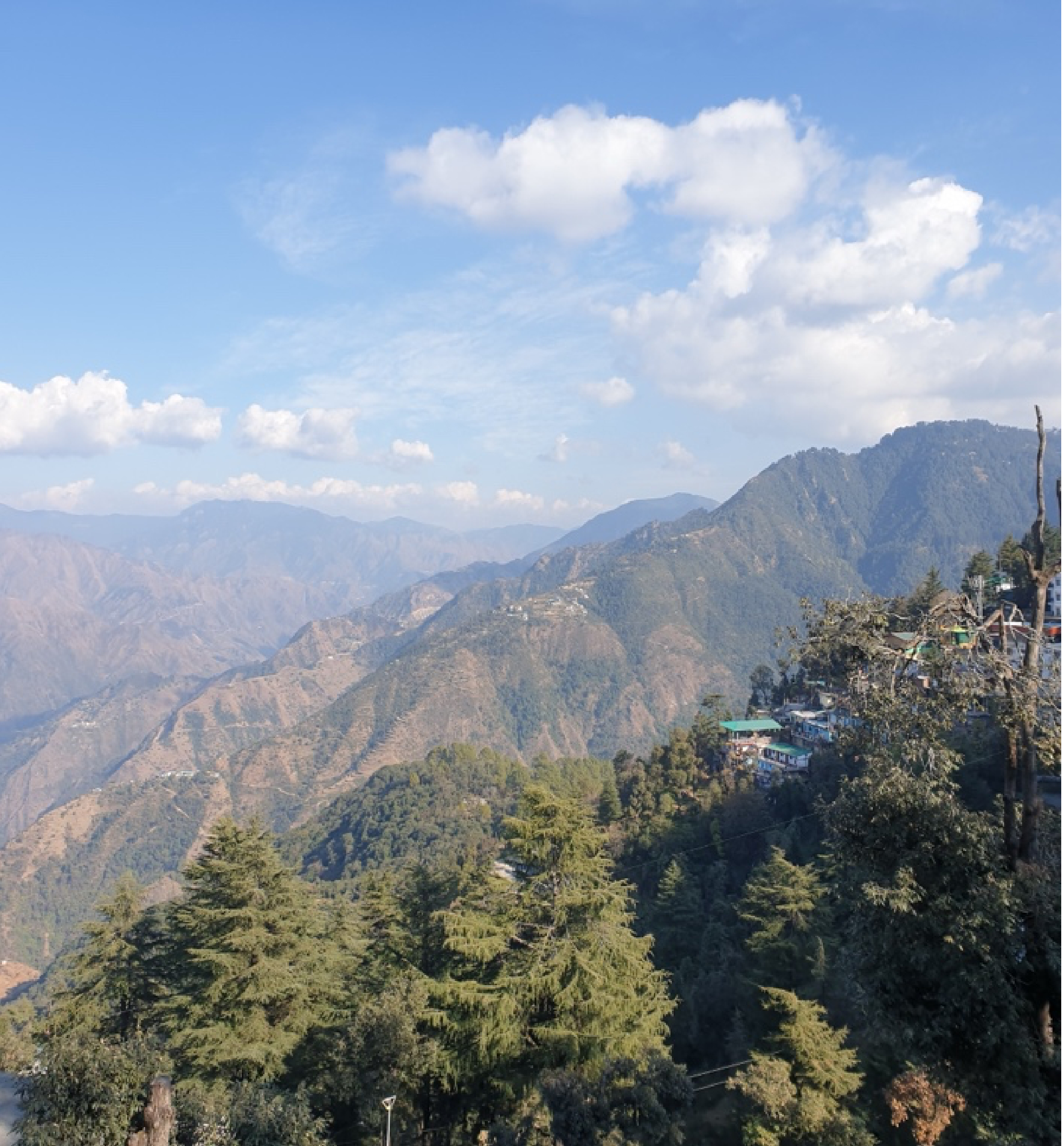Jagat Ram, a 40 years old Gram Pradhan of Durlekh panchayat of Didihat block, Pithoragarh narrates that cloudbursts and landslides are the main hazards in his Gram Panchayat and how on 15 Aug 2004, a landslide destroyed his house, killed a girl in his village, shattering many lives in front of his eyes.
31-year-old Pushpa Devi of Munsiyari block, Pithoragarh also shares that the villages in her Panchayat are highly exposed to landslides caused by heavy rainfalls and floods. She says, ”In both 2008 and 2013, many households and cattle were washed away by landslides in Bhadeli village.”
 |
| Jagat Ram can be seen here |
Like Jagat Ram and Pushpa Devi, a majority of the villagers in these Himalayan districts are farmers and their livelihood is directly linked to vagaries of weather conditions. On learning about the Pragya’s installations of weather monitoring stations in the number of villages, they appear hopeful that there would be less damage in such events now, as people could be alarmed beforehand. Pushpa Devi says, “It will not only warn us about the hazardous event but will also help us in getting adequate emergency supplies, in place, post-disaster.”
Installation
of weather monitoring stations is being piloted across 800 villages in 4
districts (Chamoli, Pithoragarh, Rudraprayag, and Uttarkashi) under the project
DMS Himalaya by Pragya. The project incorporates two tools namely “Go-Risk” which is an early
warning tool with grassroots measurement grids and communication channels for
pre-disaster use) and “RnR-Comm”, a component for
relief and response information-sharing tool to help multi-agency response
coordination for post-disaster use. These tools aim to enhance local
self-reliance and improve the effectiveness of humanitarian support.
DMS Himalaya focusses on pre-disaster early warning system by strengthening the communities to be aware of early warnings through regular monitoring of weather conditions which can prevent loss of lives and damage to resources and livestock even if the disaster strikes. The young and enthusiastic local villagers are identified and trained to form Disaster Response Team (DRTs) to use these stations independently by conducting mapping, monitoring, and reporting on damage and relief, post-disaster. The identified Points of Presence (POPs), function as communication centers for isolated habitations in remote parts. The initiative is further strengthened by forming resource hubs District Disaster Management Support Units (DDMSUs), for implementing DMS Himalayas effectively.
“As far as I know this is first of its kind project. This will forewarn us about the disasters, and will save many lives” says Balwant Singh, a resident of Sitoli village of Didihat block in Pithoragarh, Uttarakhand.
These weather stations are gradually enabling the villagers in the Himalayan districts to prepare themselves for forthcoming calamities and helping them to build a disaster-resilient future for themselves!





No comments:
Post a Comment